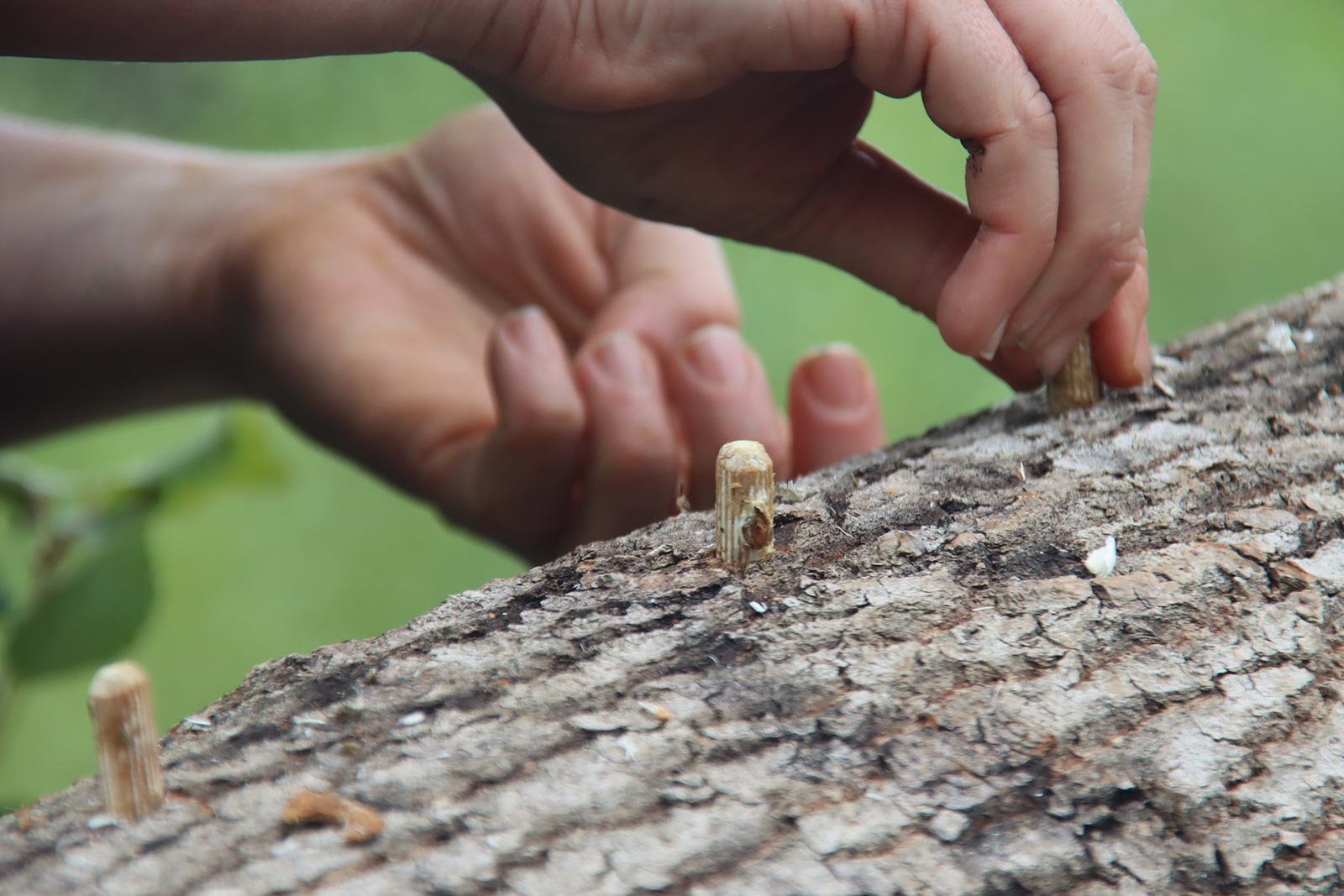
Wood-inhabiting fungi, or polypores, are among the key species enhancing the biodiversity of forest nature, but many of them are threatened. Finnish researchers have found a way of inoculating trees with polypore mycelium.
’I’ll be damned,’ is the spontaneous comment by Reijo Penttilä, Research Scientist at Natural Resources Institute Finland, as he rolls aside a spruce log on the forest floor.
Lurking under the log is a colony of pinkish fungi of the rare Fomitopsis rosea species. It is because of this and other threatened species and the inoculation of trees with them that the Natural Resources Institute expert on polypores has invited journalists on this forest excursion to Janakkala in southern Finland. Despite his long career with fungi, the expert is surprised at the number of fruiting bodies.
‘This looks really good,’ he enthuses after also finding specimens of Skeletocutis odora in the vicinity.
Fomitopsis rosea and other polypores are vital for the biodiversity of forests, for they cause their host tree to decay. Decayed wood, in turn, is crucial for the survival of many other threatened species, but commercial forests too little of it.
This is why the proliferation of these polypores is such good news, not just for the fungi themselves, but also for countless other species.
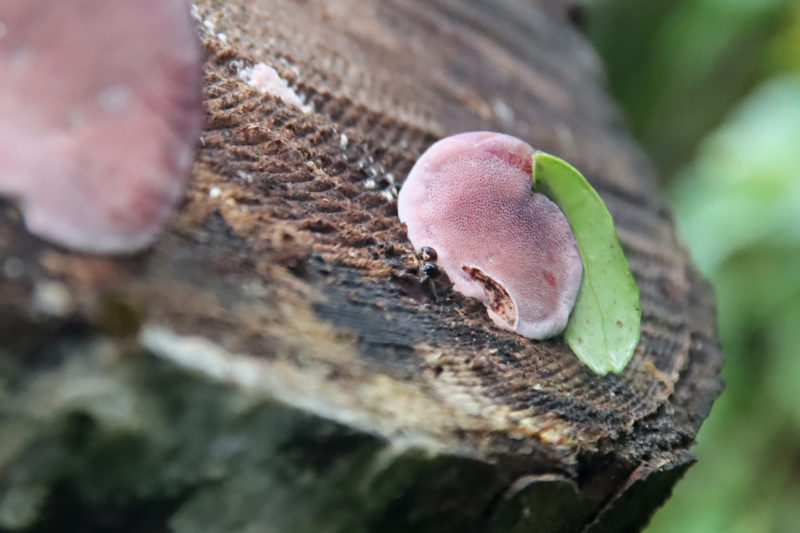
It was not by accident that Penttilä found the colonies of polypore fruiting bodies: they are the result of a study on the potential of inoculating trees with the mycelium of threatened polypores. Unlike the easy translocation of many plant species, the translocation of fungi has very rarely been successful.
This promising new method used by Finnish researchers can be applied on other fungi living on tree trunks and in other geographical areas.
Best results with the most critical species
The study is a collaboration between Natural Resources Institute Finland and the University of Helsinki. In 2019 and 2020, polypore species hosted by spruce, goat willow, aspen and Scots pine were translocated to forests owned by Metsähallitus, the City of Helsinki and the forest industry company UPM. The project is currently the most extensive experiment of its kind that has been carried out anywhere.
’We’re studying whether the mycelium manages to grow and propagate, and ultimately produce fruiting bodies and spores,’ says Penttilä, who is in charge of the project.
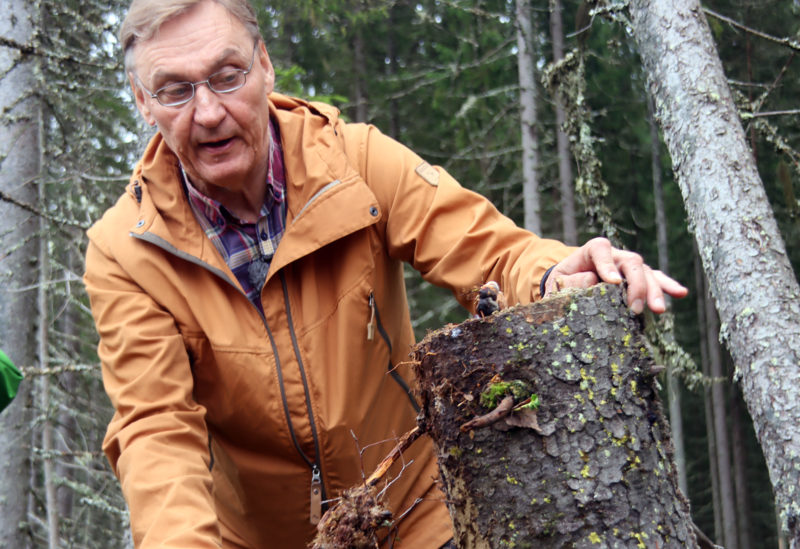
The spreading of the fungi in the host tree is studied by taking powdered samples of the trunk close to the plugs inserted and carrying out DNA analyses on them. At the moment it would seem that the Skeletocutis odora mycelium just found by Penttilä, used to inoculate spruce, has succeeded in not only spreading, but also producing the fruiting bodies visible on the tree trunks, even sooner than the researchers had hoped.
’It’s also quite encouraging that as regards species hosted by aspens, for example, the translocation has succeeded best with two species that are among the most threatened: the vulnerable Radulodon erikssonii and the critically endangered Perenniporia tenuis,’ says Penttilä.
The experiments must take into account many variables. There is a difference between trees that have fallen spontaneously or been felled, and whether they are deep inside the forest or at the edge. Other important factors are the length of time that the tree has lain down at the moment of inoculation and how many other species of fungi are growing on it naturally. On the basis of what is known of the spreading of translocated mycelium it would seem, among other things, that as regards spruce, the translocation has been at least as successful with spruces that have been felled fairly recently than with older and slightly decayed trees fallen spontaneously.
The trees are inoculated with small plugs of wood on which mycelium of threatened saprophytes has been transferred. The mycelium has been cultivated in the Natural Resources Institute laboratory from fungi collected from forests.
The plugs are inserted into holes bored in fallen or felled trees. Each tree is only inoculated with one species, though different strains of the same polypore are inserted in the same tree. This is to ensure the success of the operation and genetic diversity.
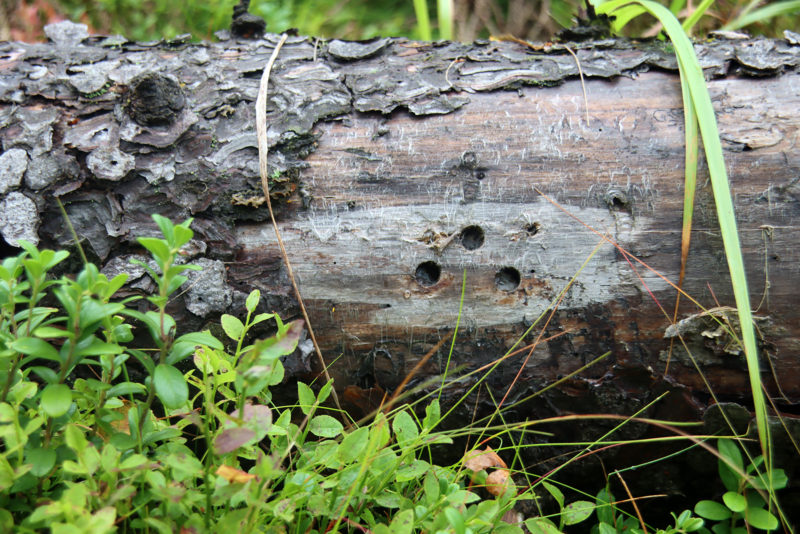
Aiming at spontaneous propagation
The fruiting bodies of the pinkish Fomitopsis rosea grow in a commercial spruce forest owned by UPM in Janakkala. The area contains plenty of deadwood and stands of different ages and is thus appropriate for the experiment. Useful places include former felling sites on which many aspens have been retained, so there are plenty of stout fallen aspens. They are suitable for inoculation with the critically endangered Perenniporia tenuis, which favours more open sites.
“Its translocation has been quite successful on open sites like this,” says Penttilä.
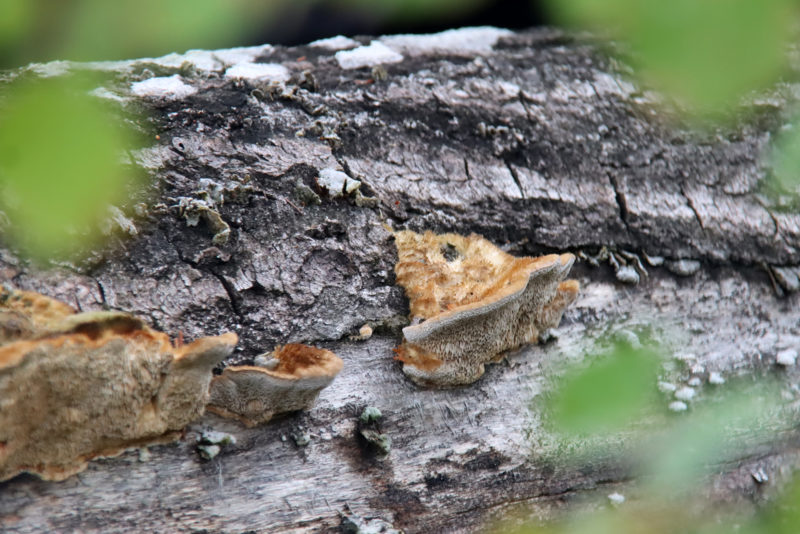
Leaving deadwood and retention trees in commercial forests as part of routine nature management is vital for the protection of saprophytes.
’About one quarter of the species in Finnish forests are dependent on deadwood. One of the most important measures by UPM to promote biodiversity is to double the volume of deadwood in the company forests in Finland,’ says Sami Oksa, Director of Stakeholder Relations at UPM Forest.
Oksa says that since the beginning of the 2000s, UPM has not removed any deadwood from its forests.
Both Oksa and Penttilä point out that leaving deadwood in the forest is one of the most important ways of safeguarding and improving the living conditions of threatened species.
’The translocation is a kind of first aid to help the most threatened polypores to survive. The operation is successful if the species also begin to propagate spontaneously,’ Penttilä says.
